Stress-Deformation Modeling
with SIGMA/W
An Engineering Methodology
July 2012 Edition
GEO-SLOPE International Ltd.
�
Copyright © 2004-2012 by GEO-SLOPE International, Ltd
All rights reserved. No part of this work may be reproduced or transmitted in any
form or by any means, electronic or mechanical, including photocopying,
recording, or by any information storage or retrieval system, without the prior
written permission of GEO-SLOPE International, Ltd.
Trademarks: GEO-SLOPE, GeoStudio, SLOPE/W, SEEP/W, SIGMA/W,
QUAKE/W, CTRAN/W, TEMP/W, AIR/W and VADOSE/W are trademarks or
registered trademarks of GEO-SLOPE International Ltd. in Canada and other
countries. Other trademarks are the property of their respective owners.
GEO-SLOPE International Ltd
1400, 633 – 6th Ave SW
Calgary, Alberta, Canada T2P 2Y5
E-mail: info@geo-slope.com
Web: http://www.geo-slope.com
�
SIGMA/W
Table of Contents
1
2
3
Table of Contents
Introduction ......................................................................................... 1
1.1
Applications ......................................................................................................................... 1
Deformation analysis .................................................................................................... 1
Staged construction ...................................................................................................... 2
Excess pore-water pressures ....................................................................................... 3
Soil-structure interactions ............................................................................................. 4
Consolidation analyses ................................................................................................. 5
Numerical Modeling: What, Why and How ......................................... 7
Introduction ......................................................................................................................... 7
2.1
2.2
What is a numerical model? ................................................................................................ 7
Modeling in geotechnical engineering ................................................................................. 9
2.3
2.4
Why model? ...................................................................................................................... 11
Quantitative predictions .............................................................................................. 11
Compare alternatives ................................................................................................. 13
Identify governing parameters .................................................................................... 14
Discover physical process - train our thinking ............................................................ 15
How to model .................................................................................................................... 18
Make a guess ............................................................................................................. 18
Simplify geometry ....................................................................................................... 20
Start simple ................................................................................................................. 21
Do numerical experiments .......................................................................................... 22
Model only essential components .............................................................................. 23
Start with estimated material properties ..................................................................... 24
Interrogate the results ................................................................................................. 25
Evaluate results in the context of expected results .................................................... 25
Remember the real world ........................................................................................... 25
2.6
How not to model .............................................................................................................. 26
2.7
Closing remarks ................................................................................................................ 27
SIGMA/W: Fundamentals and Practical Modeling Considerations ... 29
Introduction ....................................................................................................................... 29
3.1
Density and unit weight ..................................................................................................... 30
3.2
3.3
Compaction and density ................................................................................................... 31
Compaction and strength ........................................................................................... 32
2.5
Page i
�
Table of Contents
SIGMA/W
4
3.4
3.5
3.6
4.3
3.7
3.8
Plasticity ............................................................................................................................ 33
Volume change ................................................................................................................. 34
Effective and total stress ............................................................................................ 34
Compressibility and consolidation .............................................................................. 35
Zero change in pore-water pressure .......................................................................... 38
Strength parameters ......................................................................................................... 39
Mohr stress circle ....................................................................................................... 39
Mohr Coulomb failure criteria ..................................................................................... 40
Triaxial testing ............................................................................................................ 41
Soil stiffness – Young’s modulus ................................................................................ 42
Total stress, effective stress and pore-water pressures ................................................... 43
Incremental formulation .................................................................................................... 44
Body forces – unit weight ........................................................................................... 44
3.9
Serviceability versus stability ............................................................................................ 45
3.10 Modeling progression ........................................................................................................ 45
3.11 Units .................................................................................................................................. 46
Geometry and Meshing .................................................................... 47
Introduction ....................................................................................................................... 47
4.1
Geometry Objects in GeoStudio ....................................................................................... 48
4.2
Soil regions, points and lines ...................................................................................... 49
Free points .................................................................................................................. 51
Free lines .................................................................................................................... 51
Interface elements on lines ......................................................................................... 52
Circular openings ........................................................................................................ 54
Mesh generation ............................................................................................................... 55
Structured mesh ......................................................................................................... 56
Unstructured quad and triangle mesh ........................................................................ 56
Unstructured triangular mesh ..................................................................................... 56
Triangular grid regions ................................................................................................ 57
Rectangular grid of quads .......................................................................................... 58
Surface layers ................................................................................................................... 58
Joining regions .................................................................................................................. 61
Meshing for transient analyses ......................................................................................... 62
Finite elements .................................................................................................................. 63
Element fundamentals ...................................................................................................... 64
Element nodes ............................................................................................................ 64
4.4
4.5
4.6
4.7
4.8
Page ii
�
SIGMA/W
Table of Contents
4.9
Field variable distribution ............................................................................................ 64
Element and mesh compatibility ................................................................................. 65
Numerical integration .................................................................................................. 67
Secondary variables ................................................................................................... 68
General guidelines for meshing ........................................................................................ 68
Number of elements ................................................................................................... 69
Effect of drawing scale ............................................................................................... 69
Mesh purpose ............................................................................................................. 70
Simplified geometry .................................................................................................... 71
Material Models and Properties ........................................................ 73
Constitutive models overview ........................................................................................... 73
5.1
5.2
Linear-elastic model .......................................................................................................... 75
Anisotropic elastic model .................................................................................................. 76
5.3
Elastic-plastic model ......................................................................................................... 78
5.4
Plastic matrix .............................................................................................................. 79
Yield criterion .............................................................................................................. 80
Negative pore-water pressure .................................................................................... 82
Cam-clay model ................................................................................................................ 83
Soil parameters .......................................................................................................... 84
Yield function .............................................................................................................. 85
Plastic matrix .............................................................................................................. 87
Evaluation of the plastic matrix ................................................................................... 89
Initial condition ............................................................................................................ 91
Soil parameters .......................................................................................................... 93
Modified Cam-clay model ................................................................................................. 94
Initial Conditions ......................................................................................................... 96
Commentary on Cam-Clay Models ................................................................................... 96
Slip surfaces ...................................................................................................................... 96
User Add-in constitutive models ....................................................................................... 96
E-modulus functions.......................................................................................................... 96
Sample functions ........................................................................................................ 98
5.11 Undrained strength functions ............................................................................................ 99
Boundary Conditions ...................................................................... 101
6.1
Multiple boundary condition types ................................................................................... 101
Force or displacement .................................................................................................... 101
6.2
6.3
Body loads ...................................................................................................................... 102
5.7
5.8
5.9
5.10
5.5
5.6
Page iii
5
6
�
Table of Contents
SIGMA/W
7
8
6.4
6.5
6.6
Boundary condition locations .......................................................................................... 103
Nodal boundary conditions ............................................................................................. 104
Edge boundary conditions (pressures or stresses) ........................................................ 105
Converting edge conditions to nodal equivalent forces ............................................ 106
Fluid pressure conditions .......................................................................................... 107
Defining a stress boundary at internal element edges ............................................. 108
Region face boundary conditions ............................................................................. 108
6.7
Transient boundary conditions ........................................................................................ 110
Analysis Types ................................................................................ 113
Problem view ................................................................................................................... 113
7.1
Initial in-situ stresses ....................................................................................................... 113
7.2
Ko procedure ............................................................................................................. 114
Limitations ................................................................................................................ 115
Pore-water pressures ............................................................................................... 115
Unsaturated Soils ..................................................................................................... 116
Example .................................................................................................................... 117
Specifying initial conditions ............................................................................................. 119
Load / deformation analysis ............................................................................................ 119
Dynamic deformation analysis ........................................................................................ 119
Stress redistribution ........................................................................................................ 120
Concept and procedure ............................................................................................ 120
Strength reduction stability ....................................................................................... 121
Permanent deformations .......................................................................................... 122
Limiting equilibrium ................................................................................................... 122
Strain Softening ........................................................................................................ 122
7.7
Staged / multiple analyses .............................................................................................. 123
Coupled Stress-Pore Pressure Analysis ......................................... 125
8.1
Constitutive equation for soil structure ............................................................................ 125
Flow equation for water phase ........................................................................................ 127
8.2
Finite element formulation for coupled analysis .............................................................. 128
8.3
8.4
Computed material parameters ...................................................................................... 131
Pore-pressure response ratio ......................................................................................... 132
8.5
Coupled analysis data ..................................................................................................... 132
8.6
Material properties .................................................................................................... 132
Boundary conditions ................................................................................................. 133
Saturated-only coupled analysis ..................................................................................... 133
7.3
7.4
7.5
7.6
8.7
Page iv
�
SIGMA/W
Table of Contents
9
10.3
10.4
10.5
10.1
10.2
9.2
9.3
9.4
9.5
9.6
8.8
Uncoupled analysis ......................................................................................................... 133
8.9
Time stepping sequence ................................................................................................. 134
8.10 Changes in Conductivity ................................................................................................. 135
8.11
Submerged Deposition ................................................................................................... 136
8.12
Validation ........................................................................................................................ 136
8.13 Coupled analysis examples ............................................................................................ 137
Functions in GeoStudio .................................................................. 139
Spline functions ............................................................................................................... 139
9.1
Slopes of spline functions ......................................................................................... 140
Linear functions ............................................................................................................... 140
Step functions ................................................................................................................. 141
Closed form curve fits for water content functions .......................................................... 142
Add-in functions .............................................................................................................. 142
Spatial functions .............................................................................................................. 144
10 Structural Elements ........................................................................ 145
Introduction ..................................................................................................................... 145
Beam elements ............................................................................................................... 145
Interpolating functions for a beam element .............................................................. 145
Stiffness matrix for a beam element ......................................................................... 146
Beam examples .............................................................................................................. 148
Bar elements ................................................................................................................... 149
Interpolating functions for a bar element .................................................................. 149
Stiffness matrix for a bar element ............................................................................. 149
Bar example .................................................................................................................... 151
11 Staged Construction Sequencing ................................................... 153
Basic concepts ................................................................................................................ 153
11.1
Fill placement example ................................................................................................... 153
11.2
Excavation ....................................................................................................................... 156
11.3
11.4
Braced excavations ......................................................................................................... 157
11.5 Closing remarks .............................................................................................................. 157
12 Numerical Issues ............................................................................ 159
12.1 Nonlinear analysis ........................................................................................................... 159
12.2 Convergence ................................................................................................................... 161
Significant figures ..................................................................................................... 162
Page v
�
Table of Contents
SIGMA/W
12.3
12.4
12.5
Minimum difference .................................................................................................. 162
Maximum number of iterations ................................................................................. 162
Viewing convergence data ....................................................................................... 163
Limiting loads – use incremental loading ........................................................................ 163
Tension zones ................................................................................................................. 164
Equation solvers (direct or parallel direct) ...................................................................... 164
13 Visualization of Results ................................................................... 165
Introduction ..................................................................................................................... 165
13.1
Load steps ....................................................................................................................... 165
13.2
13.3
Types of data available in Contour ................................................................................. 165
13.4 Node and element information ........................................................................................ 168
13.5 Graphing Node and Gauss Data ..................................................................................... 169
Sum(Y) versus average(X) graphs ........................................................................... 171
13.6
“None” values .................................................................................................................. 171
13.7
Isolines ............................................................................................................................ 172
13.8 Mohr circles ..................................................................................................................... 172
13.9
Animation ........................................................................................................................ 173
13.10 Viewing displacements ................................................................................................... 173
13.11 Projecting Gauss point values to nodes ......................................................................... 174
13.12 Contouring data ............................................................................................................... 175
Illustrative Examples ....................................................................... 179
14
15
Theory ............................................................................................. 181
Introduction ..................................................................................................................... 181
15.1
Finite element equations ................................................................................................. 181
15.2
Strain-displacement matrix ....................................................................................... 182
Elastic constitutive relationship ................................................................................ 184
Body forces ............................................................................................................... 184
Forces due to boundary stresses ............................................................................. 185
Nodal forces ............................................................................................................. 186
15.3 Numerical integration ...................................................................................................... 187
15.4
Assembly and solving of global equations ...................................................................... 189
Element stresses ............................................................................................................. 190
15.5
16 Appendix A: Interpolating Functions ............................................... 191
16.1 Coordinate systems ........................................................................................................ 191
Page vi
�
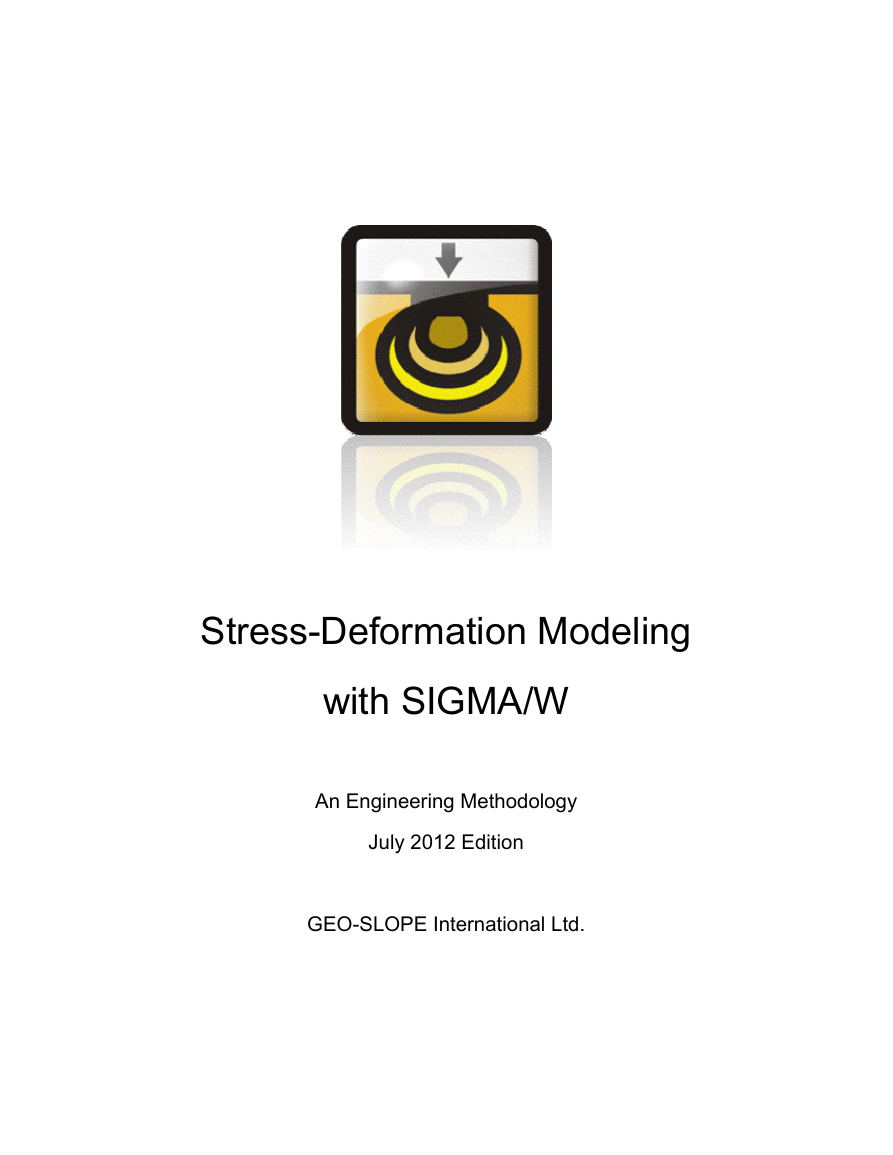
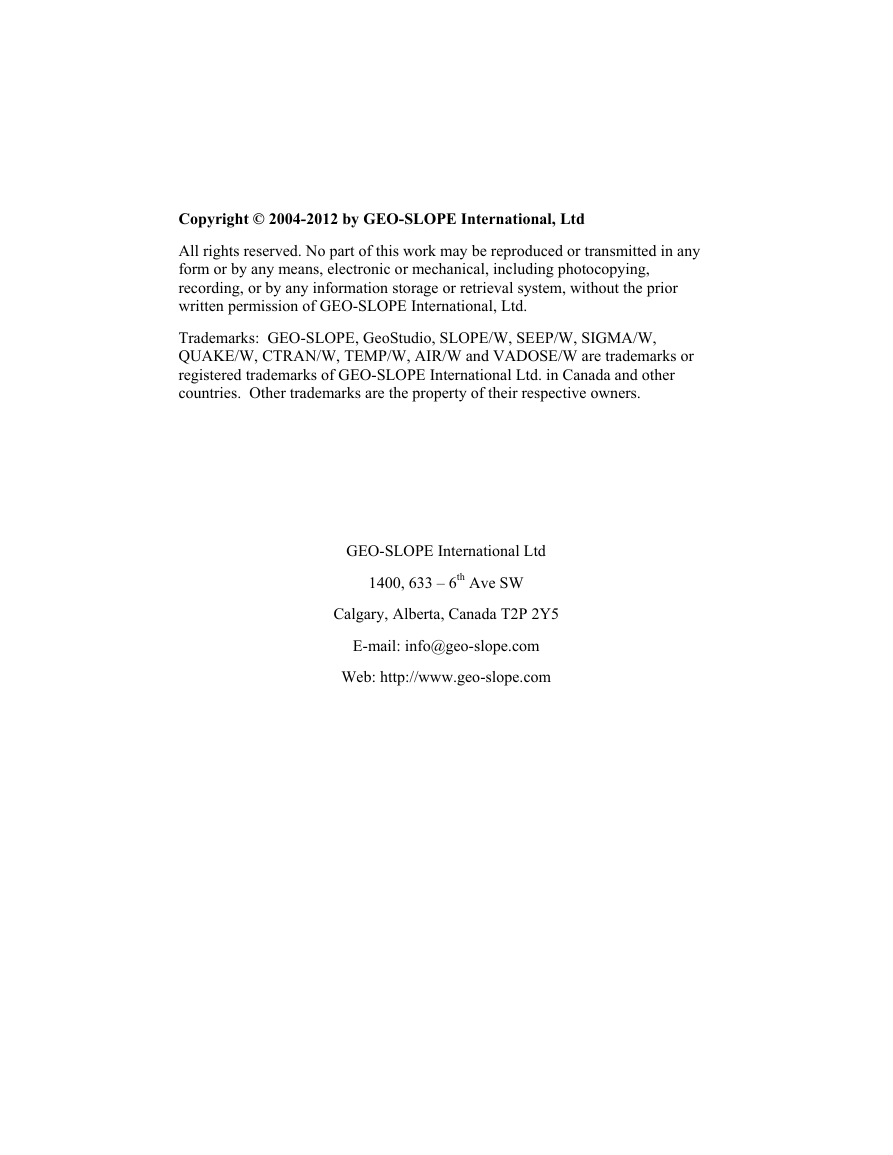
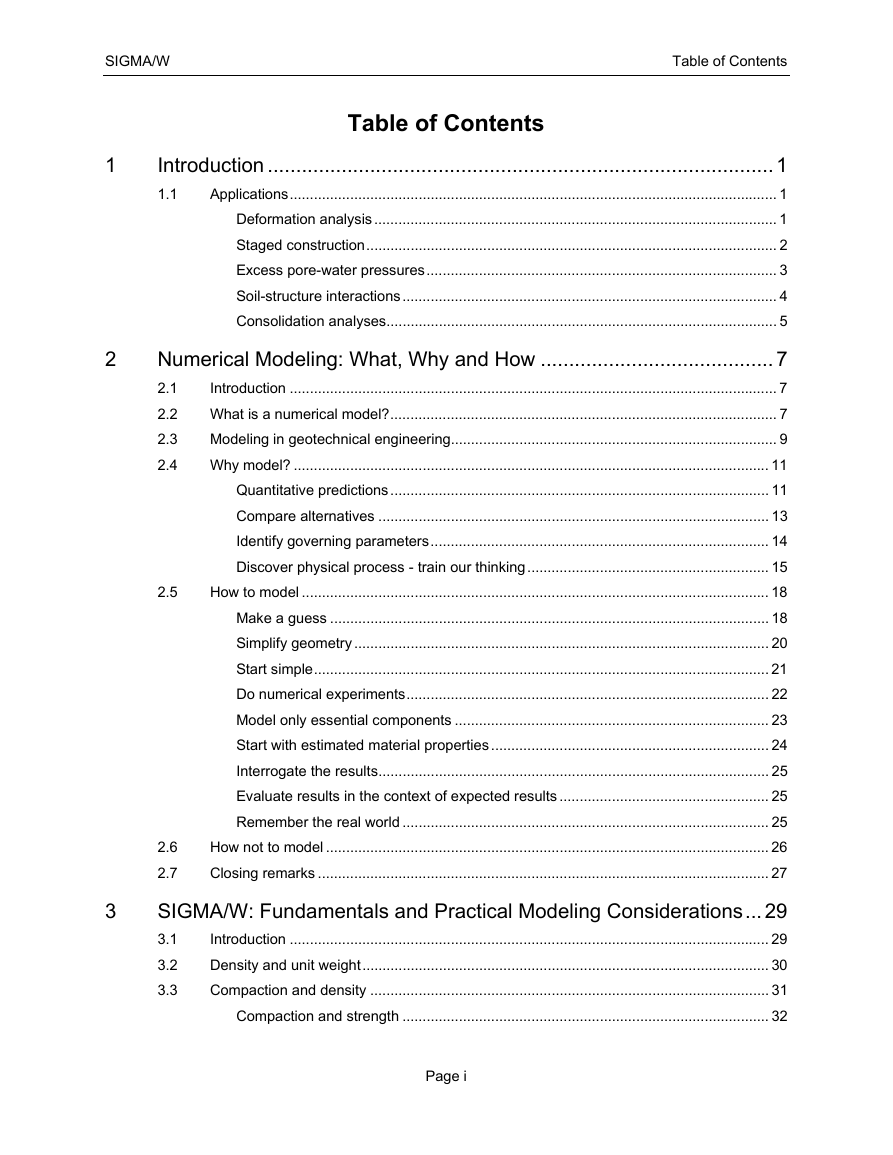
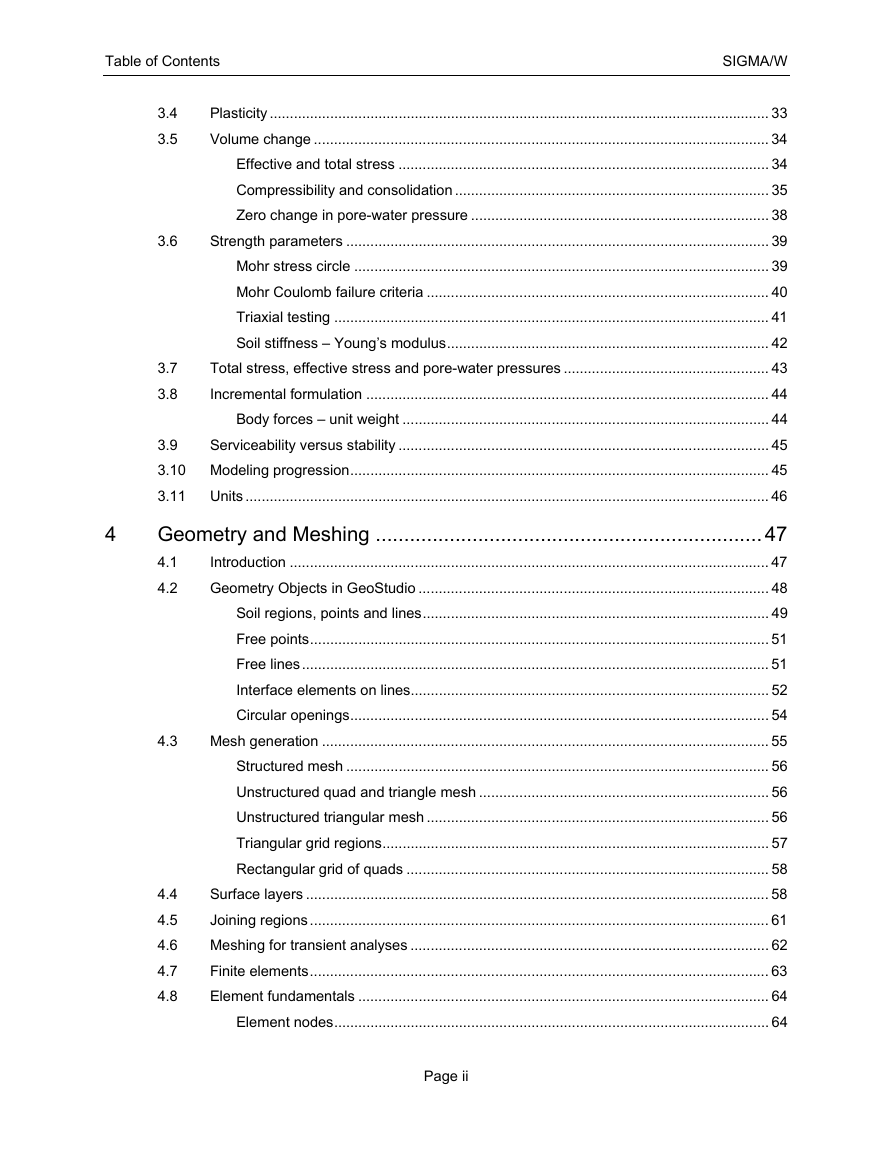
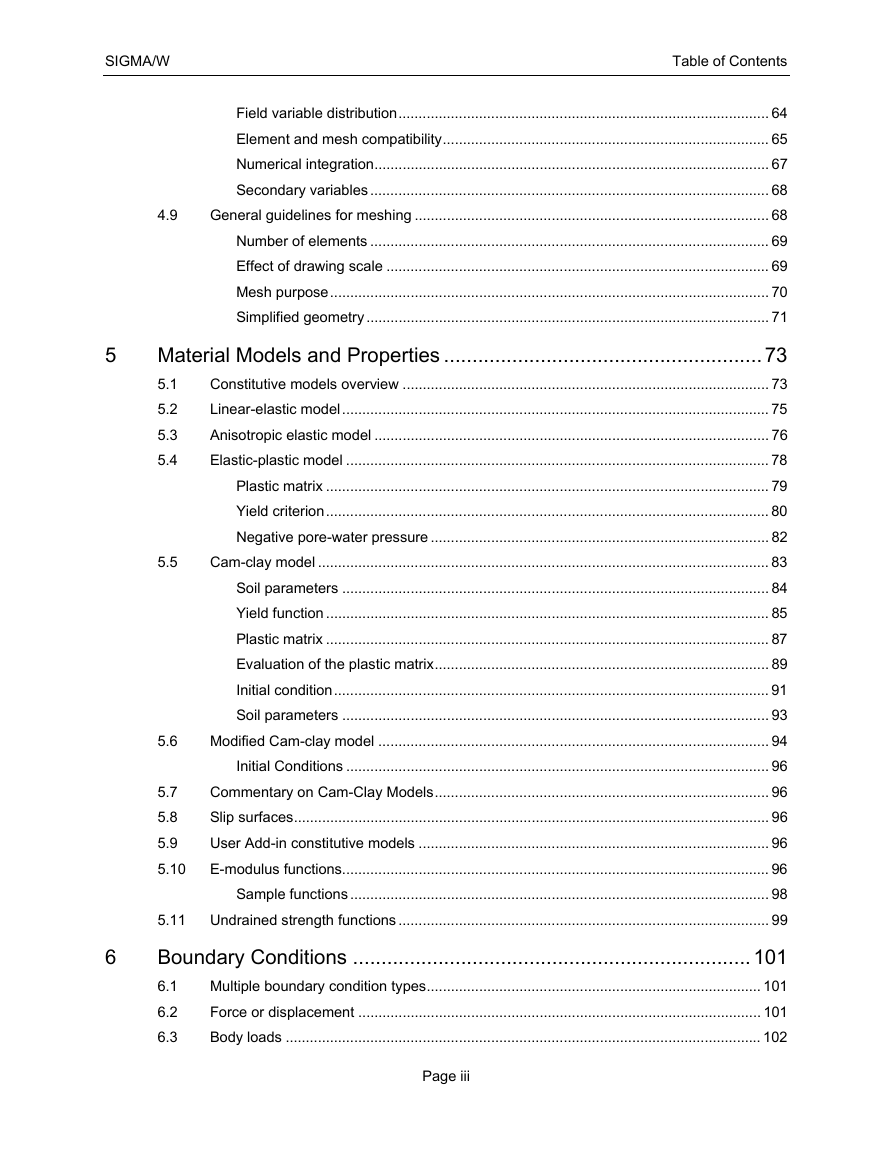

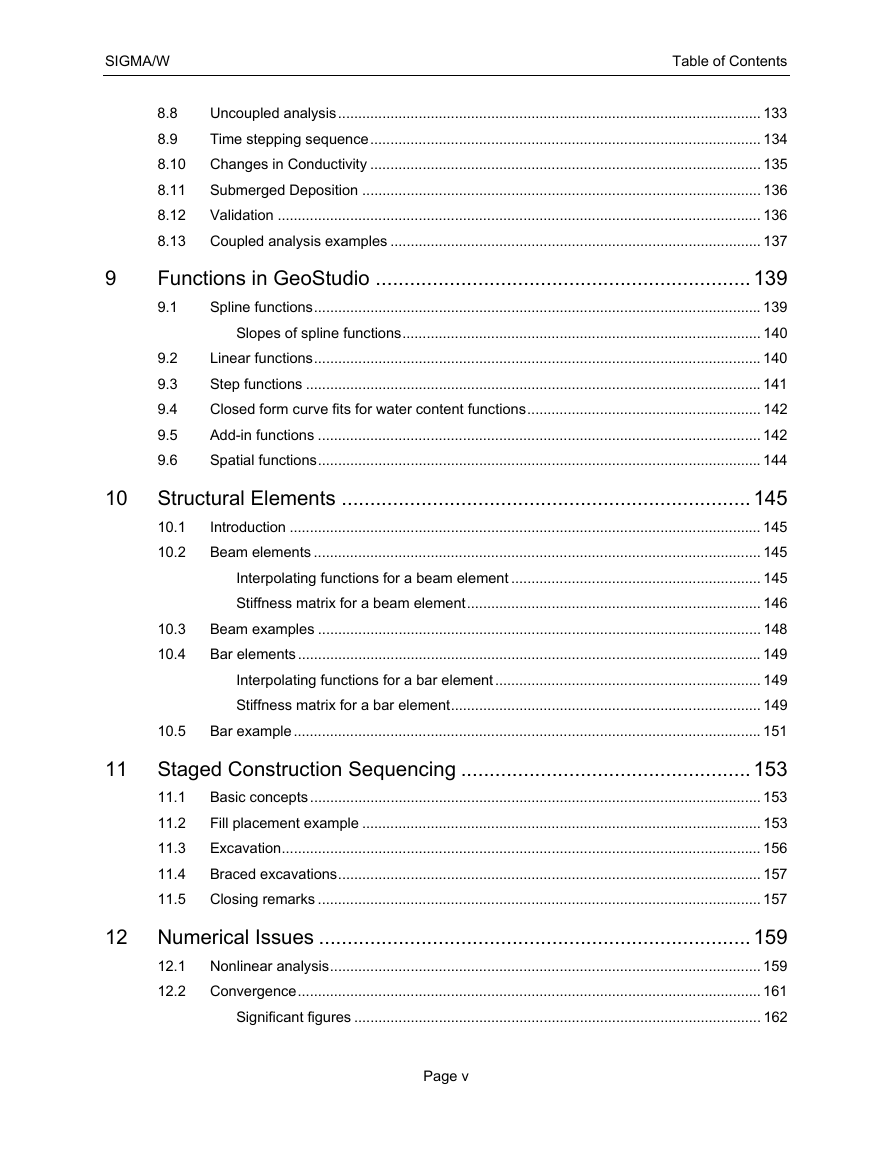









 2023年江西萍乡中考道德与法治真题及答案.doc
2023年江西萍乡中考道德与法治真题及答案.doc 2012年重庆南川中考生物真题及答案.doc
2012年重庆南川中考生物真题及答案.doc 2013年江西师范大学地理学综合及文艺理论基础考研真题.doc
2013年江西师范大学地理学综合及文艺理论基础考研真题.doc 2020年四川甘孜小升初语文真题及答案I卷.doc
2020年四川甘孜小升初语文真题及答案I卷.doc 2020年注册岩土工程师专业基础考试真题及答案.doc
2020年注册岩土工程师专业基础考试真题及答案.doc 2023-2024学年福建省厦门市九年级上学期数学月考试题及答案.doc
2023-2024学年福建省厦门市九年级上学期数学月考试题及答案.doc 2021-2022学年辽宁省沈阳市大东区九年级上学期语文期末试题及答案.doc
2021-2022学年辽宁省沈阳市大东区九年级上学期语文期末试题及答案.doc 2022-2023学年北京东城区初三第一学期物理期末试卷及答案.doc
2022-2023学年北京东城区初三第一学期物理期末试卷及答案.doc 2018上半年江西教师资格初中地理学科知识与教学能力真题及答案.doc
2018上半年江西教师资格初中地理学科知识与教学能力真题及答案.doc 2012年河北国家公务员申论考试真题及答案-省级.doc
2012年河北国家公务员申论考试真题及答案-省级.doc 2020-2021学年江苏省扬州市江都区邵樊片九年级上学期数学第一次质量检测试题及答案.doc
2020-2021学年江苏省扬州市江都区邵樊片九年级上学期数学第一次质量检测试题及答案.doc 2022下半年黑龙江教师资格证中学综合素质真题及答案.doc
2022下半年黑龙江教师资格证中学综合素质真题及答案.doc